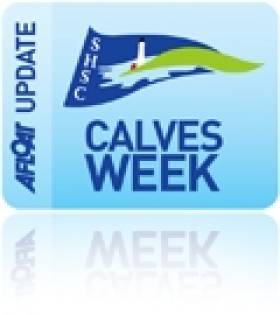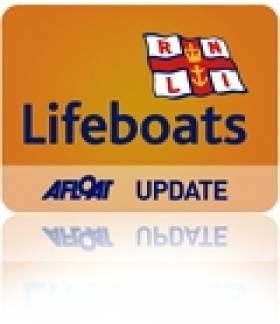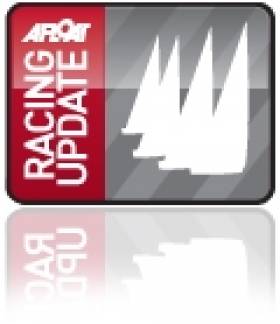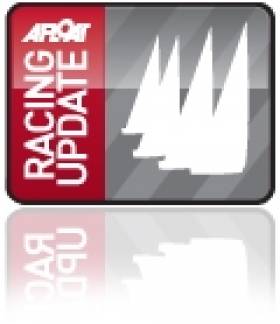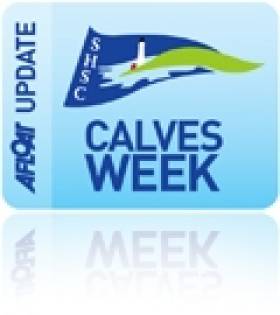Displaying items by tag: Baltimore
Impressive Views from Dublin and Cork Waterfront Properties
This semi detached holiday home is situated on an elevated site with uninterrupted harbour views just a five minute scenic walk to the village.
Baltimore is a renowned sailing centre with its three sailing schools and two diving centres. Regular ferry trips will take you to the nearby islands of Cape Clear and Sherkin with its lovely sandy beaches.
Vaulted ceilings to dining area, Oak timber beams, open fireplace, teak stairs, paved patio areas are some of the attractive features of this property.
The asking price is €465,000. All the details plus lovely photos here.
The second property to catch our eye while wandering round Howth head in the past fortnight is a detached dormer bungalow, with spectacular uninterrupted sea-views over Dublin Bay. The property is tucked away in a secluded and very private location beside Howth Summit for €650,000. Great views here.
Tributes Paid to Cork Boat Builder George Bushe
Sailing tributes have been paid to legendary boat builder George Bushe, who died last week aged 89.
Born in Baltimore, Co Cork, Bushe got his start in boat building through his father, who make traditional punts. From there he went on to Skinner's Boatyard in Skibbereen and worked with the late Jack O'Driscoll in Ringaskiddy.
In the 1960s and '70s he worked at the Southcoast Boatyard in Rochestown, where be built many famous racing boats for Cork's premier sailing clans - such as the Golden Apple for the late Hugh Coveney, father of Minister for the Marine Simon Coveney.
Bushe went into semi-retirement in the 1970s, working at the Royal Cork Yacht Club, restoring boats in winter and even racing his own until the mid 2000s.
His remains were carried to St Patrick's Cemetary in Crosshaven aboard the Cánóg, the last boat he completed and which he raced competitively as recently as 2006.
George Bushe is survived by his wife Carmel and their children: Bernice, Fergus, sail maker Majella, shipwright Mark, and boat builder and sailor Killian Bushe, who just last month received the Fastnet Award for his own contributions to sailing.
The Irish Examiner has more on the story HERE.
Sailing School Navigates Beyond the Gloom
The Principal John Moore has discounted all prices by 20 to 30%. All 2009 sailors returned in 2010 and brought friends with them. The French network of the newly appointed Director of Sailing Hugues Traonmilin has brought French families to the island and the French sailors were mixed with the Irish and British children and adults with great success. In addition to a busy summer season, 60 students of a South East College came for the very first time to the Sailing School in March 2010 as part of the Transition Year programme. They were hosted with full board accommodation at the Sailing School Guest house.
Definitely the location of the Sailing School plays a big part in this success story. Heir Island is located in the middle of Roaring Water Bay half way between Schull and Baltimore. Whatever direction you sail from the Sailing School beach, you'll encounter wonderful maritime landscapes and crystal clear waters. The Topaz dinghy fleet may sail to 3 or 4 different sandy beaches on one sailing day. The 3 Dublin Bay Mermaids sailing in flotilla explore the surrounding islands of Castle Island, Sherkin Island, the 3 Calves Islands and of course the Carthy's Islands to visit the seals colony.
Such a fantastic location has orientated the programme of this Sailing School towards the "Adventure" courses of the Irish Sailing Association. The school offers Adventure 1 & 2 courses as their "speciality" course.
2011 perspectives are already very encouraging with a second college to be hosted in Spring for a 10 day transition programme meanwhile the first one is returning after excellent feedback of the 2010 students and teachers. Being a family run business makes this small company very flexible and the range of their activities covers young sailors from 8 years old to adults, groups and families, on dinghies or on a traditional Heir Island Lobster Boat, and on kayaks if you don't want to sail. Also as a qualified Yachtmaster Instructor, the director of sailing has facilitated individually tailored sail training for yacht owners aboard their own yacht, an option that has proven both practical and successful.
More information HERE.
Concern for Small Fishing Boat
Two men in a small dinghy had earlier put to sea in poor weather conditions on Wednesday 29 December. Visibility was restricted due to sea fog. When the dinghy did not return the Coast Guard were alerted. At 17:20, both the Baltimore lifeboat and the Castletownbere lifeboat were requested to provide support.
Coxswain Kieran Cotter was proceeding to Dunmanus Bay on the Tyne class all-weather lifeboat Hilda Jarrett, when the Coast Guard indicated that the two men had been observed coming ashore safe and well. The search and rescue operation was stood down.
This incident echoes a similar one earlier this year. On the 5th January 2010 almost certain tragedy was averted when the inshore lifeboat rescued two men in a 7ft dinghy, which was drifting out to open sea when their outboard failed.
Lifeboat crew on this service ; Kieran Cotter, Micheal Cottrell, Ronnie Carty, Brian McSweeney, Diarmuid Collins.
Related Safety posts
RNLI Lifeboats in Ireland
Safety News
Rescue News from RNLI Lifeboats in Ireland
Coast Guard News from Ireland
Water Safety News from Ireland
Marine Casualty Investigation Board News
Marine Warnings
Glenans Irish Sailing Club to Reunite with Les Glenans in France
The reintegration will reunite two associations which share the common aim of bringing people together through a love of sailing and the sea. It will give the Irish members access to Les Glenans' Europe wide sailing activities and allow Les Glenans to offer a unique Irish sailing experience to its 14,000 members.
The decision will allow the Glenans sailing school activity to continue in Ireland at both bases in Collanmore and Baltimore, and it secures the financial future of the Irish organisation which has experienced an increasingly difficult trading environment since the start of the recession.
Paul Rossiter, Chairman of Glenans Irish Sailing Club welcomed the unanimous vote in favour of the reintegration. "This sends a clear signal to Les Glenans that our members are strongly in favour of reuniting our interests", he said. "Les Glenans is the perfect partner," he added. "We share the same values and objectives, and the same DNA."
Luc Fourichon, the President of Les Glenans said "One of our main aims is to create, by sailing, links between members from various countries and various walks of life. Our Irish friends are very welcome on board. Let's sail together"
Under the agreement Les Glenans will take over the assets and liabilities of Glenans Irish Sailing Club. The Club's two Irish sail training bases at Baltimore, County Cork and at Collanmore Island, in Clew Bay, County Mayo will continue to operate with new investment in equipment and facilities planned.
The Irish bases will become part of Les Glenans network of sailing bases across France and Italy. Ireland will form one of Les Glenans five administrative sectors, with Irish members having full voting rights in the enlarged association.
Calves Week 2011 Notice of Race and Entry form Published
Enniskillen and Baltimore Busiest Irish Lifeboats, Launching Five Times a Day in Summer
Preliminary figures* for summer 2010, issued today (22 September) by the Royal National Lifeboat Institution (RNLI), show the charity's Irish lifeboats launched on average five times every day during June, July and August.
RNLI lifeboats were requested to launch 450 times during June, July and August. The busiest station in Ireland was Enniskillen in Fermanagh with 29 launches followed by Baltimore in West Cork with 23 callouts. Fifty-four of those launches were in Dublin at lifeboat stations in Dun Laoghaire (22), Howth (20) and Skerries (12). Read more about the year's lifeboat rescues in 2010 HERE
The figures come on the back of a significant investment by the charity in the Irish lifeboat fleet. New inshore lifeboats have been put on service in Dun Laoghaire, Kilrush in Clare and Fenit in Kerry. These new lifeboats are fast, efficient and technically equipped to reach casualties faster and to provide increased cover around the coast.
Commenting on the RNLI summer lifeboat launches, RNLI Training Divisional Inspector, Owen Medland, said, 'It has been a busy Summer for Irish lifeboat crews. Over the course of those three months there have been a number of dramatic and challenging callouts for our volunteers. This summer RNLI Sea Safety volunteers have run a number of lifejacket clinics and flare demonstrations around the coast and at inland waterways to advise all water users on how to stay safe on the water.'
RNLI Operations Director, Michael Vlasto, added: 'The summer is always busy as more and more people opt to relax at the coast. The figures show that our volunteers are called on much more during this time and the fact they respond every time the pager goes off shows just how committed they are to saving lives at sea.
'Many of our lifeboat volunteers are also particularly busy at this time with their day jobs as many of them work in the tourism industry, so we are especially grateful to them in summer – and to their employers who allow them to stop work at the "bleep of a pager" to help others, and given the current economic climate for businesses this is a great contribution to the charity.'
Read more about the year's lifeboat rescues in 2010 HERE
Related Safety posts
RNLI Lifeboats in Ireland
Safety News
Rescue News from RNLI Lifeboats in Ireland
Coast Guard News from Ireland
Water Safety News from Ireland
Marine Casualty Investigation Board News
Marine Warnings
O'Leary Adds 1720 National Title to Season Haul
Commodore's Cup Captain Anthony O'Leary led the 1720 National Championships from start to finish at Baltimore SC this weekend. He finished the seven race series with four first places. The full results are HERE. There was drama this afternoon when a competitor in the 18-boat fleet was rescued by Baltimore lifeboat. Lifeboat report of the incident HERE
O'Leary Continues Lead in 1720 Nationals
Anthony O'Leary continues to lead at the Irish 1720 National Championships hoste by Baltimore Sailing Club writes Claire Bateman. After four races sailed on Friday and one discard applied the results are: 1. Anthony O'Leary, Antix 3 pts: 2. Neil Hogan, Micam, 8 pts: 3. Ben Cooke, Smile 'n wave, 12pts: 4. Robert O'Leary, Wet 'n Ready, 15 pts: 5. Michael Wilson, Yknot 16pts.
Donal O'Leary Continues Winning Run in Roaring Water Bay
For Thursday's Inter Island race series Race Officer Neil Prendeville sent the fleets on a long course around many of the scenic marks in Roaring Water Bay writes Claire Bateman. The arrival of the forecasted rain late in the afternoon resulted in the westerly wind dropping off to a gentle breeze, necessitating the shortening of the Class Two and White Sail One courses after five hours of sailing. In class zero Kieran Twomey's "Gloves Off" showed a clean pair of heels to the rest of the fleet, by comfortably winning both IRC and Echo with"Crackerjack" and "Infinity" in second and third. In class one, Donal O'Leary continued his run of good results in winning both divisions with Simon Coveney's "Wavetrain" second in IRC and Derry Good's "Exhale" second in Echo.
The Royal Cork dominance continued in Class Two where the Desmond, Ivers, Deasy trio in "Bad Company" captured both trophies, with Conor Ronan's "Ruthless" second in IRC and John Mc Gowan's"Mackey G" filling second place in Echo. In Class Three IRC David Kenefick's Quarter Tonner,"Tiger" is proving to beunbeatable, while Paul Murray in "Full Pelt" had a slender ten second advantage in Echo .In Class Four, Richard Hanley in "Saoirse" led his family crew to victory inboth handicap divisions ahead of "Shelly D" in IRC and "Witchcraft" in Echo.In the White Sail One class Frank Whelan added another win to his recentstring of victories with Don McCarthy's "VSOP" in second and Julian Dockery's "Flying Fox" in third, while in White Sail Two it was a cleansweep for local Schull boats with Frank Murphy's "Dreamcatcher" taking thetrophy ahead of Paul and David Kiely sailing their Norfolk Smuggler "Cu NaMara" and the Crowley family in "La Perle Noire".





























